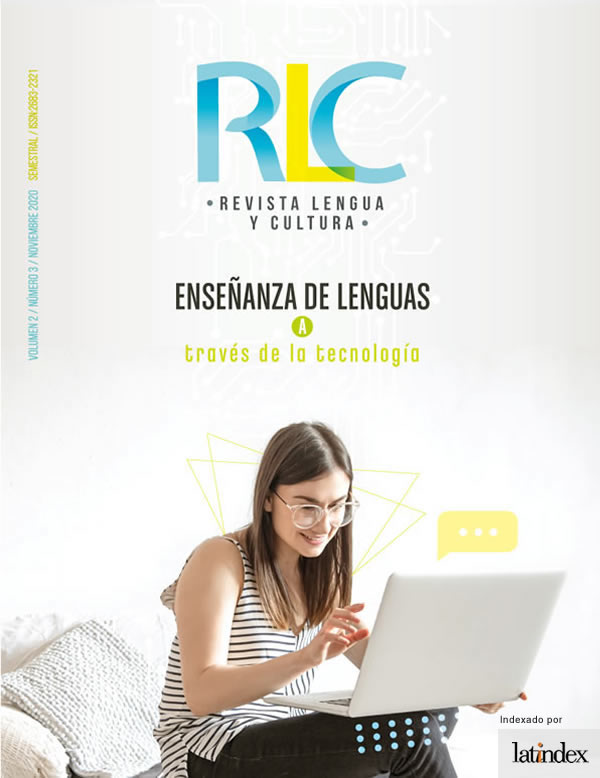Digital competence of University Students in English Language Learning during COVID-19 times.
Abstract
Nowadays, English Language Teaching uses technology as a necessary tool in the teaching-learning process in order it becomes more effective. This article presents the results of the research made about the use of Information and Communication Technologies (ICT) as a digital competence for English language self-learning by university students during the COVID-19 pandemic. The methodology of this study is quantitative descriptive; 85 students of the Faculty of Languages UAEMex were selected by a non-probabilistic sampling. The method of collecting data was with the Background Questionnaire (Liu, et. al, 2008) to participants, which was designed and administered electronically. The results suggest that despite students who are indeed using their digital competences for English language self-learning, they are having some restrictions due to their internet connection. Finally, it is established that this health contingency raises challenges for the English Language teachers as not to depend only on the Internet connection for student’s self-learning.
Downloads
References
ALTE. (2018). Welcome to alte, the Association of Language Testers in Europe. . Obtenido de http://www.alte.org
Barrera , A. (18 de marzo de 2019). Aviso. [Suspensión de clases COVID 19]. Obtenido de https://twitter.com/Rector_UAEM/status/1240494515875721217/photo/1
Bennett, S., Maton, K., & Kervin, L. (2008). The ‘digital natives’ debate: A critical review of the evidence. British Journal of Educational Technology, 775-786.
Cabero, J. (2015). Reflexiones educativas sobre las tecnologías de la información y la comunicación TIC. CEF, 19-27. Obtenido de https://campusenlinea.reduaz.mx/mtie2/pluginfile.php/3912/mod_page/content/11/Reflexiones%20educativas.pdf
CCAES. (2 de Junio de 2020). INFORMACIÓN CIENTÍFICA-TÉCNICA. Enfermedad por coronavirus, COVID-19. Obtenido de https://www.mscbs.gob.es/profesionales/saludPublica/ccayes/alertasActual/nCov-China/documentos/ITCoronavirus.pdf
Chandrasena, M. (2019). Lack Of Digital Competence: The Hump In A University - English For Specific Purpose - Classroom. INTERNATIONAL JOURNAL OF SCIENTIFIC & TECHNOLOGY RESEARCH, 10(8), 948-956.
Cobo, C. (2009). El concepto de tecnologías de la información. Benchmarking sobre las definiciones de las TIC en la sociedad del conocimiento. . ZER, 295-318.
Ferrari, A. (2013). DIGCOMP: A Framework for developing and understanding digital competence in Europe. Luxemburgo: Publications Office of the European Union.
Harmer, J. (2015). The Practice of English Language Teaching (5th ed.) . Essex: Pearson Education Limited.
Liu, M., Traphagan, T., Huh, J., Ihn Koh, Y., Choi, G., & McGregor, A. (2008). Designing Websites for ESL Learners: A Usability Testing Study. CALICO Journal, 207-240.
Morze, N., Smyrnova-Trybulska, E., & Boiko, M. (2019). The impact of educational trends on the digital competence of students in Ukraine and Poland. En E. Smyrnova-Trybulska, E-learning and STEM Education (págs. 365-379). Katowice-Cieszyn: Studio Noa for University of Silesia.
OJEU. (2006). RECOMMENDATION OF THE EUROPEAN PARLIAMENT AND OF THE COUNCIL of 18 December 2006 on key competences for lifelong learning. Luxembourg: European Union.
Organización Mundial de la Salud. (2020). Coronavirus disease (COVID-19) pandemic. Obtenido de http://www.euro.who.int/en/health-topics/health-emergencies/coronavirus-covid-19/novel-coronavirus-2019-ncov
Organización Panamericana de la Salud. (2020). Informes de Situación para COVID-19. Obtenido de https://www.paho.org/es/tag/informes-situacion-para-covid-19
Pourhosein Gilakjani, A., & Sabouri, N. (2014). Role of Iranian EFL teachers about using Pronunciation Power Software in the instruction of English pronunciation. English Language Teaching, 139-148.
Prensky, M. (2011). Enseñar a nativos digitales. México: Ediciones SM.
SEP. (14 de Marzo de 2020). Comunicado conjunto No. 3 Presentan Salud y SEP medidas de prevención para el sector educativo nacional por COVID-19. Obtenido de https://www.gob.mx/sep/es/articulos/comunicado-conjunto-no-3-presentan-salud-y-sep-medidas-de-prevencion-para-el-sector-educativo-nacional-por-covid-19?idiom=es
Tello, E. (2007). Las tecnologías de la información y comunicaciones (TIC) y la brecha digital: su impacto en la sociedad de México. Revista de Universidad y Sociedad del Conocimiento, 1-8.
UAEM. (2009). Currículum de la Licenciatura en Lengua. Toluca: UAEM - CIGOME.
UNESCO. (2018). A Global Framework of Reference on Digital Literacy Skills for Indicator 4.4.2. Montreal: UNESCO.
Vasan, N. (2020). ICT as an Effective Tool for English Language Teaching and Learning. Studies in Indian Place Names, 40(57), 63-66.
Copyright (c) 2020 Uriel Ruiz Zamora

This work is licensed under a Creative Commons Attribution-NonCommercial-NoDerivatives 4.0 International License.













